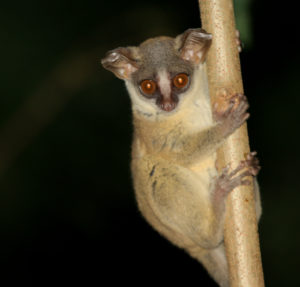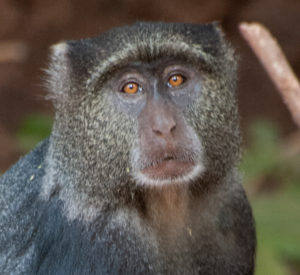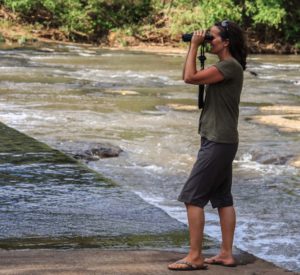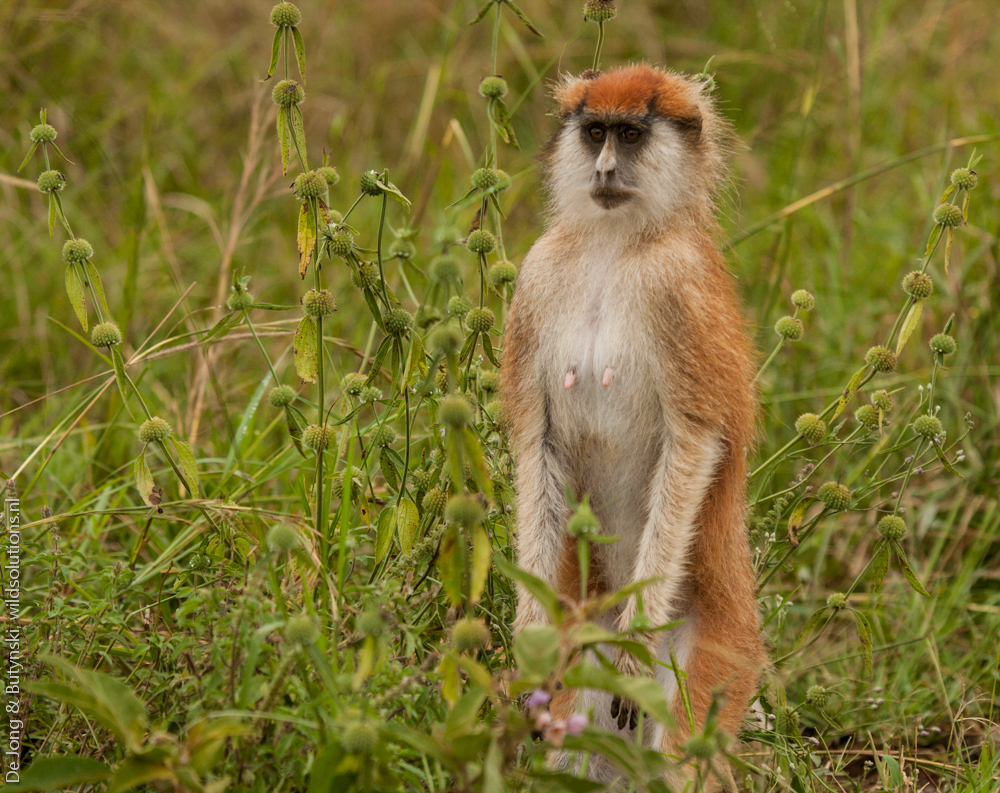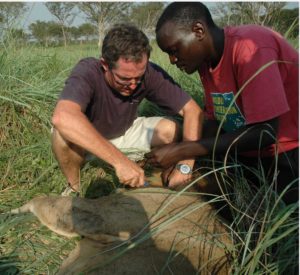
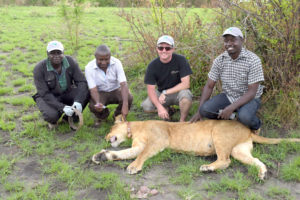
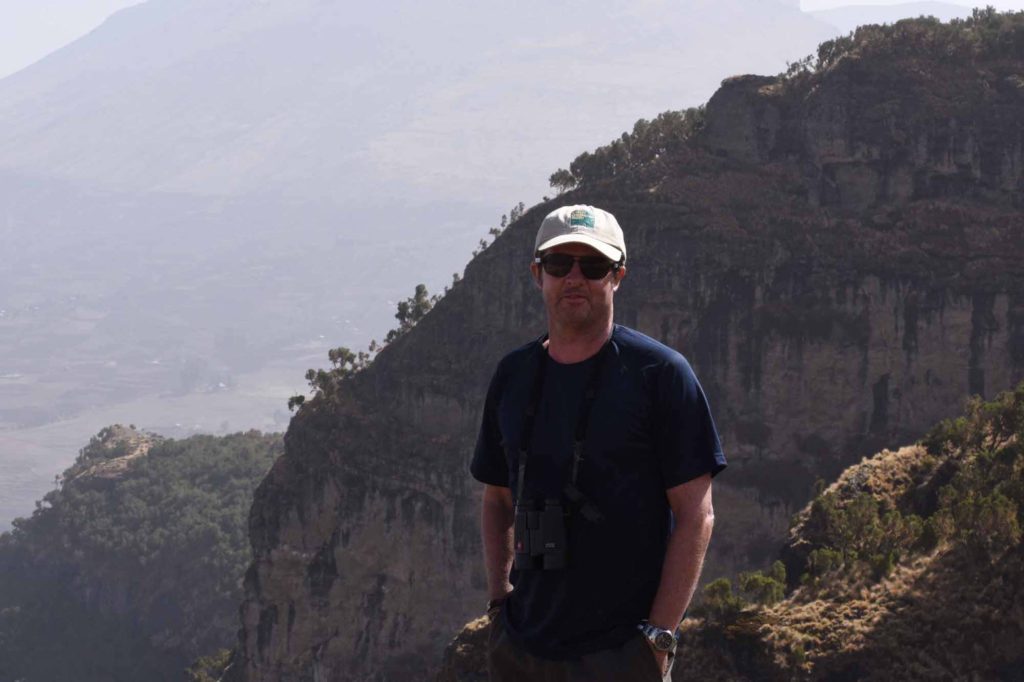
Dr. Addisu Mekonnen’s research focuses on understanding the responses of wild primates to a variety of anthropogenic and natural factors and their consequences, and the causes and consequences of diversity in ecology, behaviour, genetics, evolutionary biology, and key life-history traits. My research integrates fieldwork (ecology and conservation), laboratory work (genetics), and geospatial analyses (GIS and remote sensing) to design conservation and management strategies. I conduct my research primarily in southern Ethiopia, where I am a director of the Bale Monkey and Bamboo Research Project, which is a long-term field study (15 years) in the Odobullu Forest of the Bale Mountains and two fragmented forests in the Sidamo Highlands. I also conduct other primate and wildlife research projects in Ethiopia.
I am a behavioural ecologist specialising in the behaviour of small carnivores such as yellow mongoose, bat-eared foxes, and black-backed jackal. My past research includes work on social primates and whistling rats. I am very interested in decision-making as affected by different types of risk, which includes the interaction between humans and small carnivores. Anthropogenic habitats pose both risks and rewards to small carnivores, while increased interspecific contact may also expose humans to more zoonotic pathogens. To uncover patterns of small-carnivore behaviour at a larger scale, I am currently engaging in more collaborative research across study sites and species.
Very often, small carnivores do well in disturbed habitats, where their social behaviour may increase. Although this social (and dietary) flexibility is not detrimental to the small carnivores per se, it does tend to increase the circulation of pathogens in their populations, and by extension also exposes humans to more risk from the zoonotic disease.
Andy is head of the Key Biodiversity Areas (KBA) Secretariat. The KBA Secretariat supports the implementation of the KBA Programme focused on identifying, mapping, monitoring and conserving sites of importance for the global persistence of biodiversity. He has worked extensively in East and Central Africa where he supported the establishment of new protected areas through biological and socio-economic surveys and engagement of members of local communities. He also supported protected area authorities to better manage and conserve their protected areas in this region.
http://www.keybiodiversityareas.org/



I direct a Center that makes biodiversity data available for policy and management. Our projects include creating the Rwanda Biodiversity Information System, developing biodiversity indicators for freshwater ecosystems, and understanding buffer zone management approaches.
Yes, in buffer zones and land use type. Some buffer zones effectively extend area of the national park and are used by primates, Buffer zones around national parks are usually managed to exclude people, and since population density is so high and land limited, there is potential for multiple use in buffer zones that could benefit biodiversity and people, but he exclusion policy has negative impact on well-being.
LinkedIn | ResearchGate | Twitter
https://coebiodiversity.ur.ac.rw/
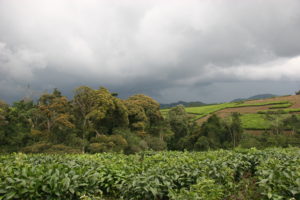
Researching samango monkey populations in South Africa’s Soutpansberg mountains since 2006, I have investigated their role in seed dispersal maintaining floristic diversity and regeneration, their spatial ecology focussing on utilisation of both naturally and anthropogenically fragmented habitats their population dynamics and regional phylogenetics. My work has always included dedicated public participation, education and conservation foci. I am currently interested in the impact linear infrastructure has not only on the samango monkey but on all five South African primates. As samango monkeys are forest specialists, my research interest extends to the roles of other forest mammals and indigenous forest conservation.
The main human activities impacting primate species in the area I work in are subsistence and commercial farming and linear infrastructure. Roads and power lines have a substantial impact on local primate populations by causing mortality and potentially forming barriers to dispersal for the smaller strepsirrhines. Human-primate interactions in agricultural and, to a lesser extent, urban areas are also common and often times lead to conflict with damage causing animals and considerable and under-reported mortality through targeted killing. Direct land transformation in some areas through rapid clearing of forests and savanna woodland for fuelwood and agricultural expansion as well as afforestation through exotic silviculture all exacerbate the influence of already naturally fragmented habitat patches occupied by the five primate species occurring. Strong biome shifts, potentially negative for some primate species, are already observed for parts of the region as a result of past and current anthropogenic drivers (extirpation of large herbivores, rapid biological invasion and altered fire regimes) and such shifts are predicted to be particularly intense for the region under most future global warming representative concentration pathways. Rapid social and environmental change, persistent poverty and constrained natural resources (particularly water) negatively impact on the well-being of people in the region.
https://www.facebook.com/LajumaResearch/
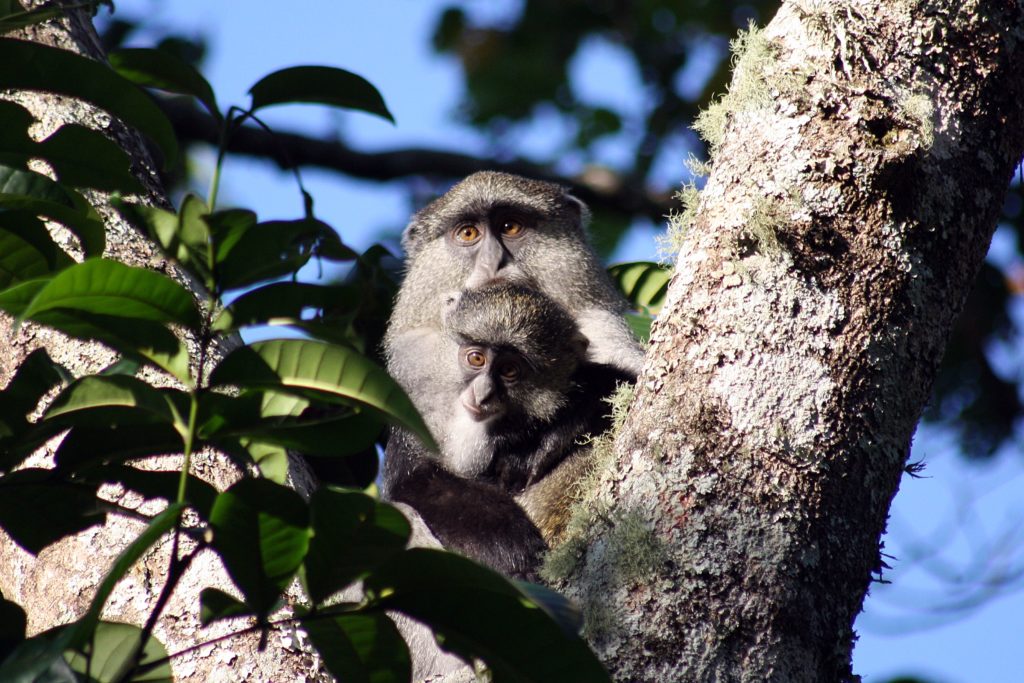
Claude primarily focuses on wildlife ecology, conservation, and infectious disease surveillance, with a particular emphasis on bats. Wildlife Ecology and Conservation: He uses bat functional traits—such as flight and dispersal ability, acoustic signals, and genetic diversity—as tools to address evolutionary questions. His research investigates how environmental factors, including forest structure, topography, temperature, and rainfall, shape patterns of bat adaptation across Afrotropical landscapes. As part of wildlife conservation efforts, he is studying population trends and the conservation status of the endangered Kisangani red colobus (Piliocolobus langi), also known as Lang’s red colobus, in the Democratic Republic of the Congo. Infectious Disease Surveillance: He is focused on the inhabited forest regions of the Democratic Republic of the Congo, where emerging infectious diseases such as orthopoxviruses and filoviruses are thought to circulate periodically among wildlife populations. He is developing a comprehensive, integrated approach combining bat surveys and large mammal monitoring to improve our understanding of how changes in biodiversity influence the risk of zoonotic disease spillover.
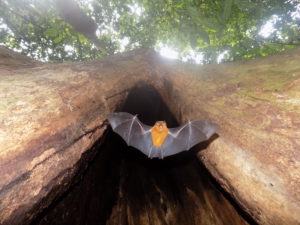
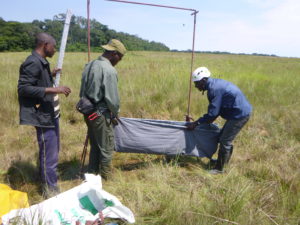
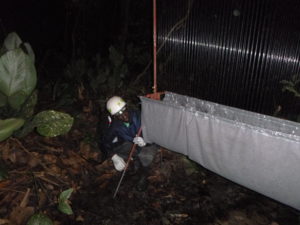
Dr. Chapman’s research focuses on how the environment influences animal abundance and social organization and given their plight, he has applied his research to primate conservation. He is a Wilson Center Fellow, Killam Research Fellow, Velan Foundation Awardee for Humanitarian Service, and is a fellow of the Royal Society of Canada. In 2018 he was awarded the Konrad Adenauer Research Award from the Alexander von Humboldt Foundation and an Office of an Academician, Northwest University, Xi’an, China. In 2019 he took up a position at George Washington University to allow him to more time for his conservation efforts. For the last 32+ years, Dr. Chapman has conducted research in Kibale National Park, Uganda. During this time, he has not just been an academic, but has devoted great effort to help the rural communities, establishing schools, clinics, a mobile clinic, and ecotourism projects. He has published 540+ articles, been cited 45000+ times, has a H factor of 107 (Google Scholar).
For the last 32+ years my project has collected data on the forest, animal populations, and human communities affecting Kibale National Park, Uganda. We have revealed a complex picture of change, where climate change, regional economic pressures, disease, nutrition, and human extractive practices all effect the primates and large mammals of the park. I have been engaged in conservation programs to help curve illegal activities, including establishing a chimpanzee ecotourism, community based ecotourism, clinic and mobile clinic to create a union between health care and conservation, school programs and education centers, and more. These activities have had a positive effect and the forest is regenerating and almost all of the primates and large mammal populations have grown substantially.
My work is mainly on endangered species management and collaborative resources management leading to better wildlife tolerance in fringe communities.
Agriculture and recently mining activities in the high forest zone of Ghana are negatively affecting wildlife habitat. These activities have caused serious wildlife habitat encroachment and fragmentation leading to increasing human-wildlife conflicts.
I have been working in Tanzania since 2002 with a main focus into the biodiversity-rich forests of the Udzungwa Mountains where I helped establishing the Udzungwa Ecological Monitoring Centre in 2006 (http://www.udzungwacentre.org/). My research mainly focuses on understanding drivers of status and vulnerability of populations and communities, with most of my experience on mammals as the subject and camera trapping as the detection method.
One example is how increased deforestation induced by farming and livestock keeping in the valley adjacent to the forests impacted the connectivity of large mammals (elephants especially) but in turn carries the potential for increasing human-wildlife conflicts and loss of forest-based products to the people themselves.
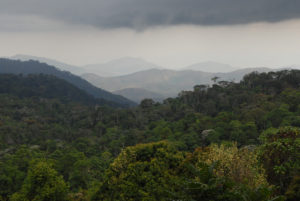
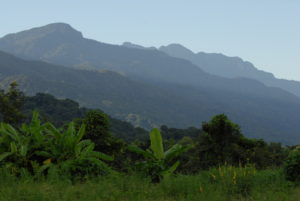
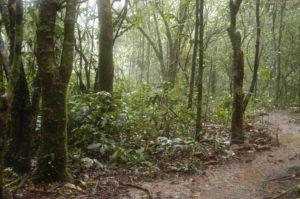
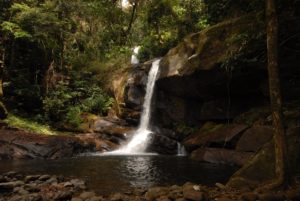
It is important to promote conservation especially this time when population is increasing and thus increasing human wildlife conflicts, leads to biodiversity loss and negatively impact conservation. In my study area, there are alot of changes especially habitat loss and habitat alteration which have led to reduction in species of various kinds.
My field research has taken me to Central America, the Caribbean, and eight African countries. After observing African monkeys in a diverse range of habitats I became fascinated by their widespread presence and behavioural flexibility around the complex relationships primates and people have with one another. I am committed to partnering with local communities and leaders to support their priorities in preserving African biodiversity.
Being able to work in different parts of Africa has been eye-opening for me in learning more about the human activities and land use that most affect primates. Where I currently work in West Africa, deforestation is a major threat to primate conservation and human communities.
Our research focuses on the ecology of galagos in Kinshasa. This work consists on one hand identification of the sites of occurrence of galagos in Kinshasa and on the other hand in studying their ecology in these environments dominated by strong anthropic pressure. We managed to report the presence of galagos in the urban forests of Kinshasa while everyone thought they were absent due to the strong and rapid urbanization of this city.
The city of Kinshasa faces a rapid and often uncontrolled urbanization which causes the destruction of forests for the construction of housing or by the use for various needs (firewood, agriculture, livestock) which leads to the loss of biodiversity. This uncontrolled urbanization does not always guarantee the well-being of men since it is at the base of most of the land erosion that the city of Kinshasa is experiencing today.
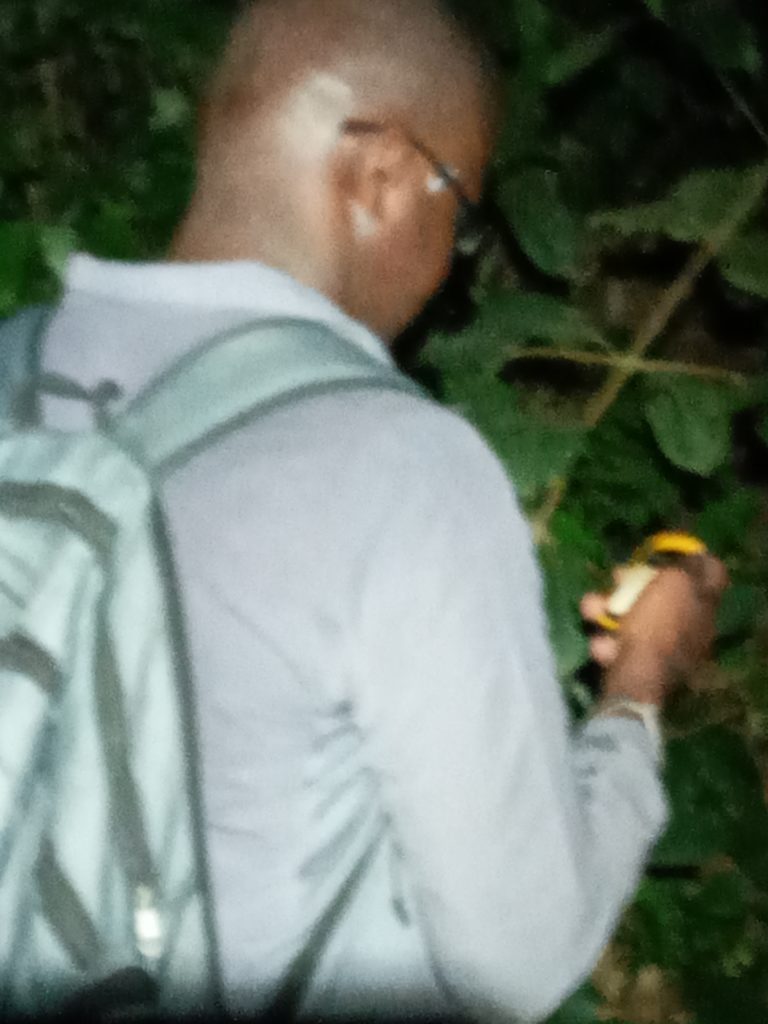
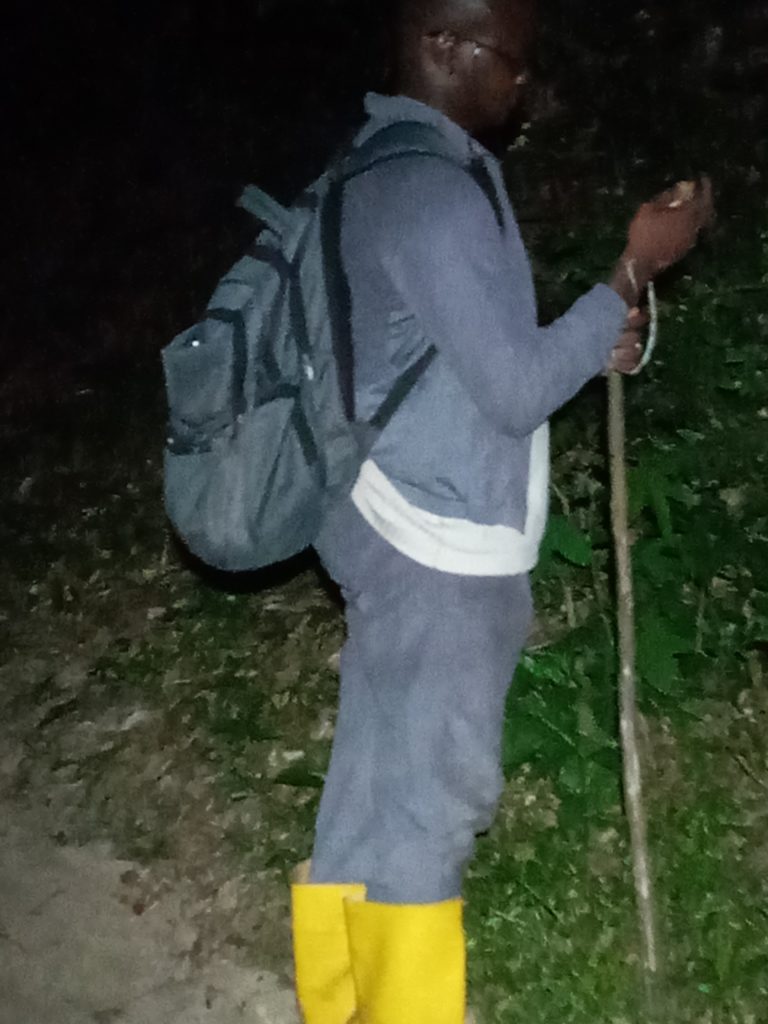
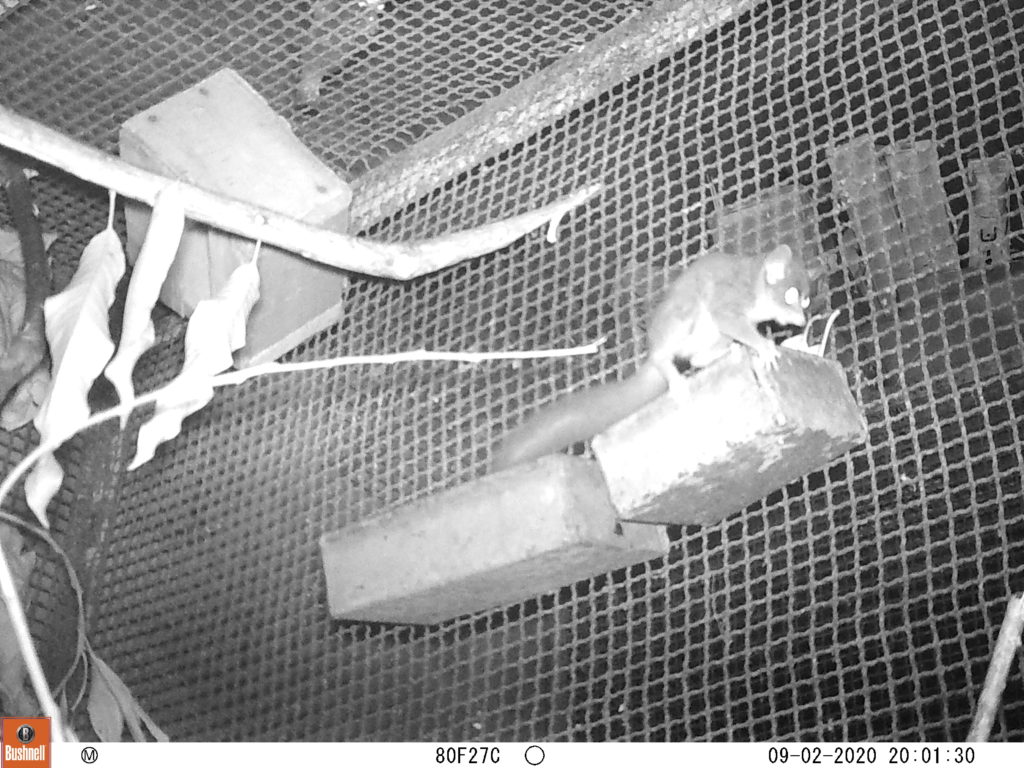
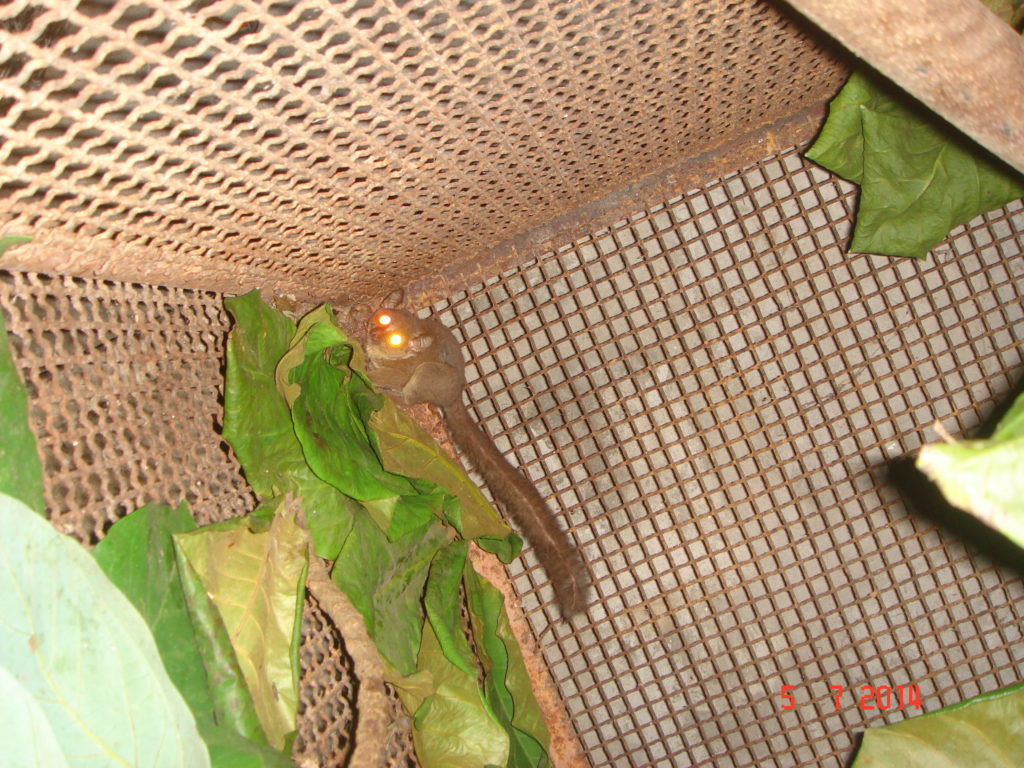
My doctorate thesis was about how an island primate, the endangered Zanzibar red colobus monkey, is behaviorally adapting to human-driven change in coastal forests. My team and I helped stop golf course development and trash dumping by hotels in a forest that became a new protected area, the Kiwengwa-Pongwe Forest Reserve. We published articles about mangrove use by Zanzibar red colobus and a book, Primates in Flooded Habitats. In 2008, I co-founded a project that is now the Southern Tanzania Elephant Program that fosters human-elephant coexistence. From 2013-2016, I researched risk and cognition in samango monkeys at two Afromontane forest sites in South Africa finding observer effects on monkeys’ landscape of fear.
In Zanzibar, I witnessed the loss of native coral rag forest and tree species for agriculture, building poles, and plantations of Casuarina; this forest loss is associated with the loss of native biodiversity and loss of medicinal plants for local people. Forest loss also increases contact between people, domestic animals such as dogs and cattle and wildlife. I witnessed dog packs harassing monkeys and duiker in forests in Zanzibar even in fringe mangroves at the tip of Uzi Island where terra firma forest directly adjacent to mangrove was being cleared for agriculture. I also observed adult red colobus grooming a calf beyond the forest margin. In the Udzungwa Mountains, polyspecific primate associations appear to be more common at forest edges than in forest core and this may have implications for disease emergence and for human-wildlife conflict. Where there is a lack of a buffer zone between intact forest and farms, and a lack of connectivity between forested areas, large mammals such as elephants, bushpigs, and baboons easily enter farms for crop-use; mitigation is that much more challenging in areas without buffer zones. For example, where we used a beehive fence to deter elephants from farmers’ crops, the fence had to be placed in a certain way at the periphery of the Udzungwa Mountains National Park so that bees would not pose a risk to farmers at work in their nearby fields. In Hogsback, South Africa, collaborators and I recommended the removal of acorns (from oaks planted by Europeans) from gardens so that these would not attract groups of samango monkeys that ingest the acorns during winter. The monkeys are perceived by some people as a nuisance when they enter gardens; the acorns are also detrimental to monkeys’ dental health. In Canada, in areas previously mined and therefore containing webs of roads, human (often with dogs) access for recreation is frequent and mammals such as mountain goats move at night possibly to avoid people. We saw this with elephants in Udzungwa, where movement and use of crops occurs at night when farmers are not in their fields. Coexistence between people and other animals will continue to pose a challenge especially where land planning excludes local people and their knowledge or fails to consider the landscape at large or species interactions.
http://www.conservationkat.com/
The Institute for Communities and Wildlife in Africa has been surveying African biodiversity to understand the potential impacts of different land use on wildlife and how abundance may influence negative interactions between humans and wildlife. We have projects throughout southern Africa on large and medium sized carnivores in addition to research on primates focussing primarily on baboons. Our single greatest contribution to biodiversity monitoring has been in the drylands of South Africa (Karoo) where we have sampled mammalian species richness both at a regional and local scale.
We have noticed how incorrect many of the popular narratives are about how land use impacts biodiversity. Mammalian wildlife in extensive small livestock farming areas is similar to that in protected areas but with the obvious absence of larger carnivores and herbivores. Plantations in South Africa host many wildlife species despite their popular perception as green deserts and periurban areas favour certain species whose abundance may increase dramatically once natural systems are disrupted including the absence of large predators and the abundance of human produced foods.
In Benin, the rainforest is confined to forest fragments in the south, mostly community forests that host the 3 endangered primate species and about 70% of threatened plants of Benin. Thus, community-based forest protection is key to conserving wildlife and their essential habitats in South Benin. Since 2011, my colleagues and I at Organisation pour le Développement Durable et la Biodiversité, a non-profit organization I co-founded spearhead the protection of threatened primates and their habitats through research, education and community development. Our team has an interest in the distribution, ecology, social behaviour, dietary ecology, and population trends of primates in the Dahomey Gap.
Benin and Togo, two countries located at the centre of the Dahomey Gap, a distinctive ecoregion between the Upper and Lower Guinean Forest Blocks in West Africa contain some unique flora and fauna. In southern Benin, the rainforest is confined to tiny forest fragments, mostly sacred or community forests that are further threatened and diminished by logging and rampant urbanization. Today, these forests cover <2% of the national territory, yet harbour about two-thirds of all IUCN red-listed plants. These centres of biodiversity in a rural or semi-urban, highly populated environment are mostly located in the flood plain of the Ouémé river. Firewood collection, uncontrolled timber exploitation and agricultural fields expansion are the main drivers of primate and other wildlife’s habitat destruction and fragmentation. These pressures are exacerbated for about a decade by transhumant shepherds as pasture is increasingly scarce in northern Benin as a consequence of climate change and countless conflicts with farmers. Primates and forest-dwelling wildlife thrive in these human-modified landscapes where human-monkeys conflict is inevitable and on the rise. Primate diversity is high only in swamp forests, gallery forests are difficult to access and the encounter rate for generalist primates like the mona monkey is very low.
LinkedIn | ResearchGate | Twitter
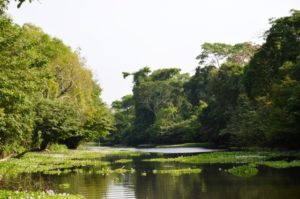
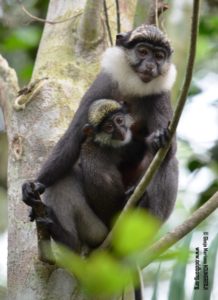
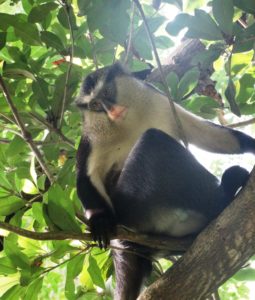
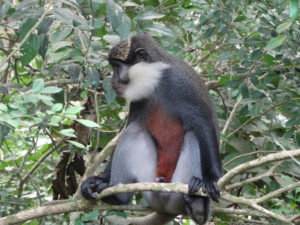
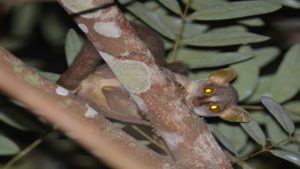
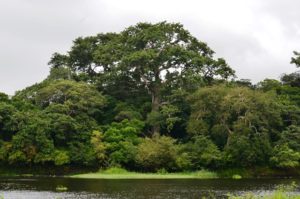
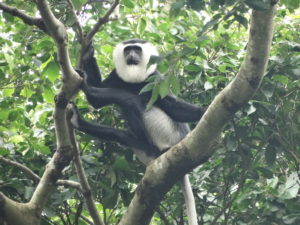
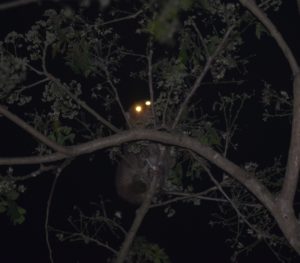
I am a behavioral ecologist who has led a >40 year study of East African forest primates. Our team has studied reproductive biology, social behavior, dietary ecology, and population trends.
The forest where I work is surrounded by a densely populated area of small farms. When maize, a staple crop, is planted right up to the forest edge, human-monkey conflict is inevitable.
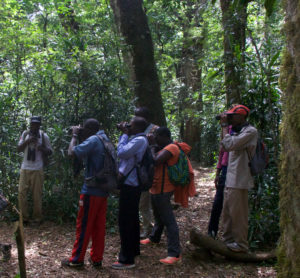
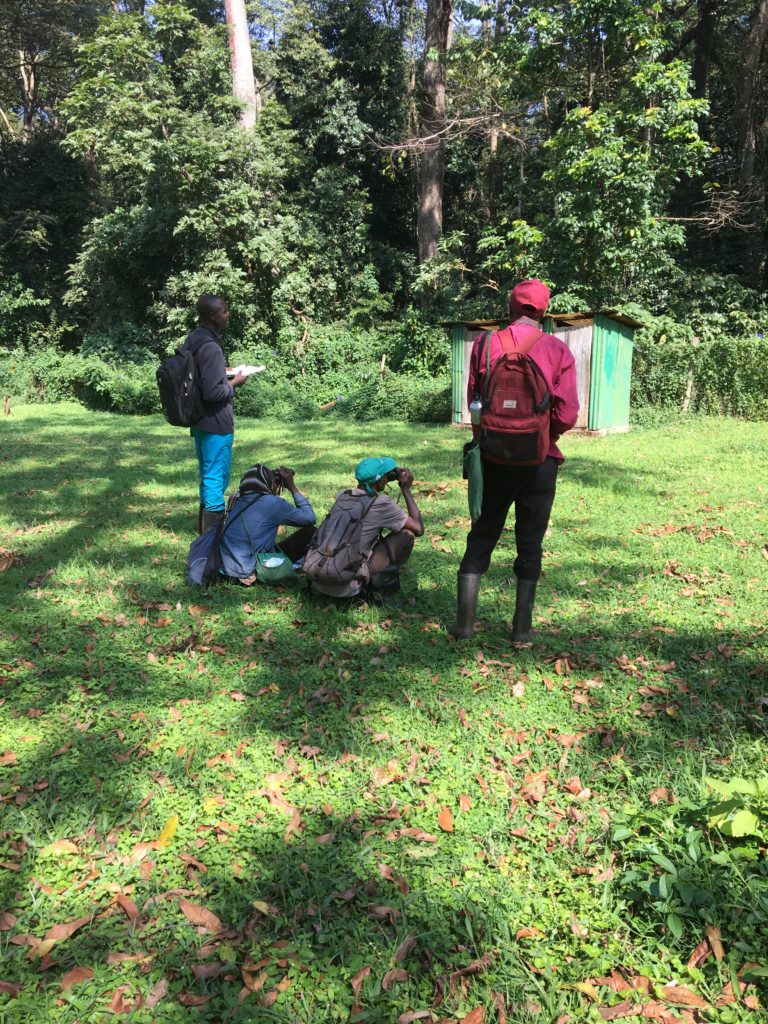
I am a behavioural ecologist at the University of California, Santa Barbara and my work focuses on the primate frugivore guild in East African rainforests. I study competitive dynamics at different scales to understand how animals coexist on a limited resource base, which is critical to ensure a future for the many primate populations that will be confined to remnant forest fragments.
Google Scholar | LinkedIn | Twitter
My current research focuses on wildlife and human behavioural ecology to better understand the evolutionary and contemporary adaptive behavioural responses to environmental changes. This line of interest stems from previous research experience on evaluating the population dynamics of the endemic and endangered Tana River Red Colobus (Procolobus rufomitratus) and Tana River Crested mangabeys (Cercocebus galeritus), and evaluation of their habitat status. This background evolved towards carrying out biodiversity surveys on both the Chyulu Forest Hills ecosystems in South-Central Kenya as well as carrying out extensive small mammal surveys integrated with externally sourced large mammal aerial surveys on the Laikipia ecosystem (North-central Kenya) to evaluate anthropogenic impacts on wildlife, and evaluation of ecosystems services to guide biodiversity conservation strategies for these regions in Kenya.
Over the last five years, I have also been coordinating a NAS-USAID funded project with a multidisciplinary team of collaborating scientists from the Smithsonian, Kenya Wildlife Service and the National Museum of Kenya to examine the interrelationship between climatic changes and diverse land-use systems (NDVI) and their influence on small and large mammal diversity and prevalence of zoonotic diseases in Laikipia, North-central Kenya. This project is also ultimately designed to integrate our disease ecological scientific data with local based knowledge to formulate and inform policies towards the management of diseases ecology and conservation of the rich mammal diversity for ecotourism and livestock-based livelihoods for local pastoralists and commercial ranching communities to build human-environmental resilience in this region. My postdoctoral research in the biodiversity-rich Chyulu Hills Ecosystem (CHE) over the last three years aims to better understand both the Maasai (West CHE) and Kamba farmers (East CHE) differential adoption of livelihood mechanisms in response to environmental shocks wrought by climate change (e.g., drought, water scarcity) and anthropogenic induced shocks from evolving historical trajectories of biodiversity conservation policies (e.g., evictions, restricted access to forest resources). This information will be designed to promote various forms of community, private-partnership engagements to co-produce an integrated scientific-local based knowledge to promote local livelihoods and biodiversity policies to build on both social and ecological resilience for the CHE. The impact of both these above-described research studies on the well being of these regions have yet to be evaluated over the long term.
https://www.sfu.ca/sustainabledevelopment/
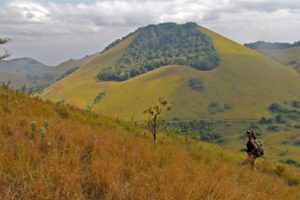
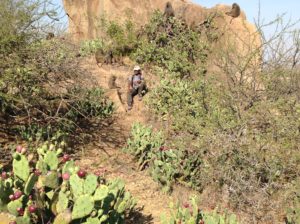
Pamela Cunneyworth, a Director of Colobus Conservation in Diani, Kenya, oversees the primate research and conservation activities of the organization. Pam received her Master’s degree in Anthropology from the University of Calgary, Canada, with a specialization in Primatology. Shortly after graduating, Pam moved to East Africa and worked with chimpanzees in Burundi, researched baboons and surveyed forests in Tanzania, as well as worked at an international level, especially advocating for the Convention on Biological Diversity. She began working with Colobus Conservation in 2003 as Conservation Manager before joining the Board of Directors in 2009.
https://www.colobusconservation.org/
My work in Kenya is to promote Key Biodiversity Area conservation framework to ensure sustainable conservation of such sites. This is mainly led by science and supported by local people, and mainstreamed into local policy processes.
Research on primate, rodent, antelope, pig, and bird biodiversity, taxonomy, biogeography, behavior, and ecology, mainly in Botswana, Equatorial Guinea, Uganda, Tanzania, Kenya, and Saudi Arabia since 1970. Led research and conservation programs and projects for New Zoological Society, WWF-US, WWF-International, Zoo Atlanta, Conservation International, Arcadia University, Drexel University, Zoological Society of London, and Lolldaiga Hills Ranch. Provided about 100 species and subspecies degree of threat assessments to the IUCN Red List. Mentored and trained many students and field workers, particularly in Uganda, Kenya, and Equatorial Guinea.
Yvonne A. de Jong (PhD) is a Kenya-based Dutch primatologist who has worked in Africa since 2002. She is the co-leader of the Eastern Africa Primate Diversity and Conservation Program, member of three IUCN/SSC Specialist Groups (Primates, Afrotheria and Wild Pigs), member of the Nocturnal Primate Research Group at Oxford Brookes University, collaborating Scientist of the Institute of Primate Research in Nairobi and member of the Primate Task Force of the Kenya Wildlife Service. Her main research focus is the biogeography, diversity and conservation of eastern Africa’s primates and several other groups of large mammals, including the warthogs (Phacochoerus) and dik-diks (Madoqua).
